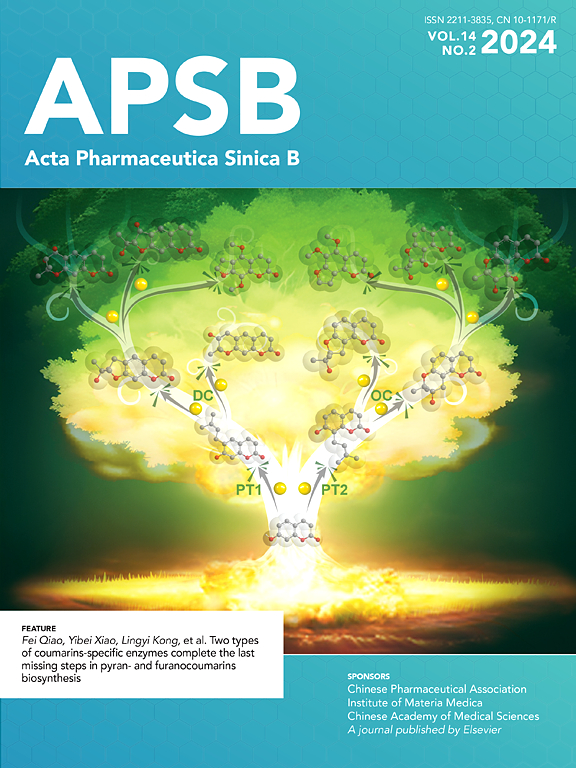NIR-II-activated whole-cell vaccine with ultra-efficient semiconducting diradical oligomers for breast carcinoma growth and metastasis inhibition
IF 14.7
1区 医学
Q1 PHARMACOLOGY & PHARMACY
引用次数: 0
Abstract
High-performance phototheranostics with combined photothermal therapy and photoacoustic imaging have been considered promising approaches for efficient cancer diagnosis and treatment. However, developing phototheranostic materials with efficient photothermal conversion efficiency (PCE), especially over the second near-infrared window (NIR-II, 1000–1700 nm), remains challenging. Herein, we report an ultraefficient NIR-II-activated nanomedicine with phototheranostic and vaccination capability for highly efficient in vivo tumor elimination and metastasis inhibition. The NIR-II nanomedicine of a semiconducting biradical oligomer with a motor-flexible design was demonstrated with a record-breaking PCE of 87% upon NIR-II excitation. This nanomedicine inherently features extraordinary photothermal stability, good biocompatibility, and excellent photoacoustic performance, contributing to high-contrast photoacoustic imaging in living mice and high-performance photothermal elimination of tumors. Moreover, a whole-cell vaccine based on a NIR-II nanomedicine with NIR-II-activated performance was further designed to remotely activate the antitumor immunologic memory and effectively inhibit tumor occurrence and metastasis in vivo, with good biosafety. Thus, this work paves a new avenue for designing NIR-II active semiconducting biradical materials as a promising theranostics platform and further promotes the development of NIR-II nanomedicine for personalized cancer treatment.

求助全文
约1分钟内获得全文
求助全文
来源期刊

Acta Pharmaceutica Sinica. B
Pharmacology, Toxicology and Pharmaceutics-General Pharmacology, Toxicology and Pharmaceutics
CiteScore
22.40
自引率
5.50%
发文量
1051
审稿时长
19 weeks
期刊介绍:
The Journal of the Institute of Materia Medica, Chinese Academy of Medical Sciences, and the Chinese Pharmaceutical Association oversees the peer review process for Acta Pharmaceutica Sinica. B (APSB).
Published monthly in English, APSB is dedicated to disseminating significant original research articles, rapid communications, and high-quality reviews that highlight recent advances across various pharmaceutical sciences domains. These encompass pharmacology, pharmaceutics, medicinal chemistry, natural products, pharmacognosy, pharmaceutical analysis, and pharmacokinetics.
A part of the Acta Pharmaceutica Sinica series, established in 1953 and indexed in prominent databases like Chemical Abstracts, Index Medicus, SciFinder Scholar, Biological Abstracts, International Pharmaceutical Abstracts, Cambridge Scientific Abstracts, and Current Bibliography on Science and Technology, APSB is sponsored by the Institute of Materia Medica, Chinese Academy of Medical Sciences, and the Chinese Pharmaceutical Association. Its production and hosting are facilitated by Elsevier B.V. This collaborative effort ensures APSB's commitment to delivering valuable contributions to the pharmaceutical sciences community.
 求助内容:
求助内容: 应助结果提醒方式:
应助结果提醒方式:


